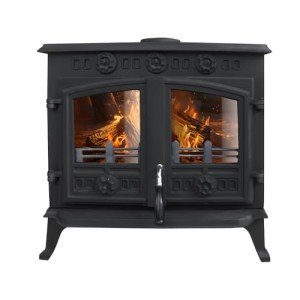Why We Do We Love Burning Wood In Multi Fuel Stove (And You Should, Too!)
Burning Wood in a Multi-Fuel Stove: A Comprehensive Guide
Multi-fuel stoves have actually acquired tremendous popularity over the last few years, offering adaptability and effectiveness for heating areas while permitting users to try out different fuel types. Among these, burning wood remains a preferred alternative due to its availability, cost-effectiveness, and the warm atmosphere it develops. This article will offer an in-depth take a look at burning wood in a multi-fuel stove, consisting of benefits, considerations, and FAQs.
Understanding Multi-Fuel Stoves
A multi-fuel stove is designed to burn more than one type of fuel, such as wood, coal, or peat. These stoves boast an effective combustion system if used correctly and can offer a broader series of heating alternatives compared to standard wood-burning stoves.
Secret Features
- Versatility: Capability to burn various types of fuels.
- Effectiveness: Better combustion control enables more effective burning and heat production.
- Cost-Effectiveness: Ability to utilize less expensive or more readily offered fuels.
- Eco-Friendly Options: Many multi-fuel stoves are designed to decrease emissions and take full advantage of heat output.
Benefits of Burning Wood in Multi-Fuel Stoves
Burning wood in a multi-fuel stove has several unique benefits:
- Sustainability: Wood is a sustainable resource when sourced responsibly.
- Expense: In many areas, wood can be less costly than oil or other fossil fuels.
- Visual Appeal: The atmosphere of a wood fire is unequaled, offering heat and a cozy atmosphere.
- Effectiveness: Modern multi-fuel stoves are created to optimize the performance of wood combustion, translating to much better heat output for less fuel.
Ecological Considerations
When selecting to burn wood, it's essential to consider the ecological implications:
- Source: Use wood that is sustainably collected and skilled to prevent excess smoke and contaminants.
- Type of Wood: Hardwoods like oak and maple use much better heating worth than softwoods, which burn quicker and produce more creosote.
Table: Comparison of Wood vs. Other Fuels in Multi-Fuel Stoves
Fuel Type
Heat Output (BTU)
Cost
Burn Time
Environmental Impact
Wood
15,000-25,000
Moderate
2-6 hours
Low (if sourced sustainably)
Coal
12,000-30,000
Moderate to high
6-12 hours
Moderate (high emissions)
Peat
10,000-18,000
Low to moderate
4-8 hours
Moderate (diminishes resources)
Considerations for Burning Wood Safely
While burning wood in a multi-fuel stove can be beneficial, it's essential to focus on security and efficiency. Here are some essential guidelines to ensure a safe and reliable burning experience:
- Use Seasoned Wood: Freshly cut or 'green' wood consists of high wetness content, leading to ineffective burning and increased smoke emissions. Preferably, wood must be skilled for at least six months.
- Avoid Treated Woods: Never burn manufactured woods that have actually been dealt with, painted, or stained, as they can launch harmful chemicals.
- Preserve Your Stove: Regularly examine and clean your stove and flue to reduce the danger of chimney fires brought on by creosote buildup.
- Appropriate Ventilation: Ensure proper airflow through your stove. Multi-fuel stoves often feature ventilation controls to optimize combustion performance.
Frequently asked question Section
1. Can any wood be burned in a multi-fuel stove?
While numerous kinds of wood can be burned, it's best to stick to well-seasoned hardwoods for much better efficiency and reduced emissions.
2. How do I understand if the wood is skilled?
Skilled wood normally has a lighter weight, fractures in the ends, and produces a hollow noise when knocked together. If it feels moist or has a fresh cut scent, it may not be sufficiently experienced.
3. How frequently should I clean my multi-fuel stove?
A regular examination and cleansing process ought to be carried out at least once a year, though if you use your stove heavily, you may want to clean it more regularly.
4. What is the best way to start a fire in a multi-fuel stove?
Place dry kindling at the bottom, followed by some small logs. Light the kindling, and as soon as it's burning well, include larger logs slowly.
5. Can I burn various fuel types on the same fire?
It is generally a good idea to stick to one fuel type at a time. Mixing fuels can cause unforeseeable burning habits and could jeopardize the effectiveness of your stove.
Burning wood in a multi-fuel stove uses many advantages, from cost savings to ecological benefits. Ensuring correct care, utilizing the best type of wood, and keeping stove operations can lead to an effective and enjoyable heating experience. With Multi Burner to adjust to numerous fuel types, multi-fuel stoves represent a clever choice for modern heating needs. Whether a house owner is aiming to develop a comfortable atmosphere or looking for an efficient heating solution, comprehending the subtleties of wood burning will boost the experience and ensure security.
